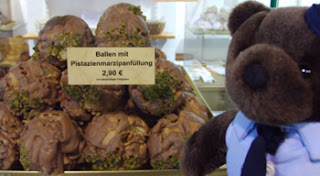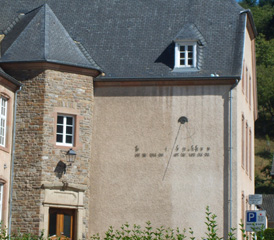When Heinrich went to Rothenburg he
stayed at a very nice hotel in the center of the old town. It was
kind of tricky to get there. Even though Heinrich goes in a very
small car, one of the roads to get to the hotel was very skinny. It
was kind of narrow even to walk on. Needless to say Heinrich had to
find a different road to get to the hotel.
The name of the hotel was the Goldennes
Lamm. It was built in the 1600s but has had several renovations since
then. It had in room bathrooms and a nice TV. On the bed was a Haribo
pack, which was a nice surprise. The owner was very nice and let Heinrich park in his place (can you see his white car) and then he parked behind him. That saved Heinrich from having to pay for parking.
The view from the window was over a
courtyard behind the hotel. It was very cool to be right in the
downtown of such a nice town. The front of the hotel faces the main
square with the town hall and the famous old tavern. There is pretty
posture in the base clinic that shows the front of the hotel and the
European street scene.
Germany is nice but has some odd parts
as well. Along a lot of the streets in every town are street side
cigarette vending machines. The nicer ones require ID to use them to
keep kids from using them but a lot of them can be used by anyone. In
the hallway of the hotel was one of these dispenser machines.
In the morning Heinrich had a really
nice buffet breakfast. There were lots of cured meats and cheeses
with rolls. There were also juices and yogurts and fruit. They also
had boiled eggs with a fancy egg holder. It was a really nice
breakfast. It's lots of fun being able to do all these cool things in
Germany.



















































